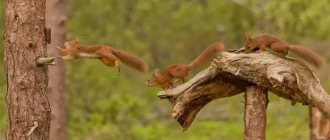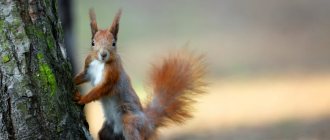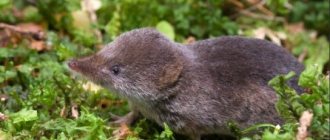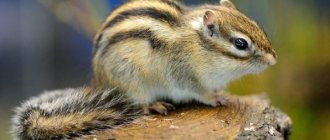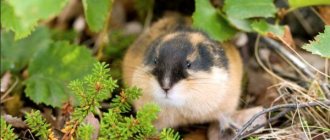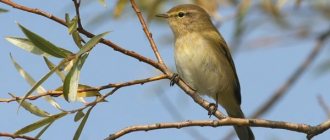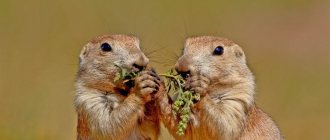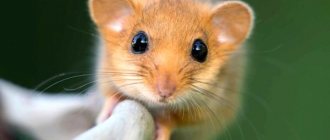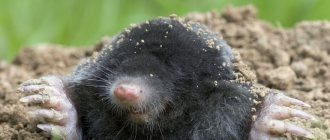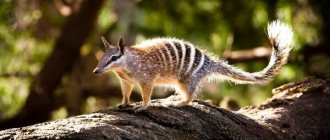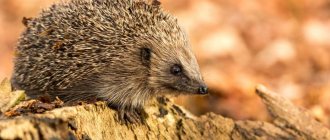Origin of the species and description
Photo: Gray squirrel
The eastern or Carolina gray squirrel (Sciurus carolinensis) came to us in Europe from North America. These squirrels were first introduced to the British Isles in the mid-19th century. Gradually, this species spread throughout Europe and Russia, found in forests, parks, plantings, in the Russian taiga and forest-steppe areas.
The ancestors of the gray squirrel, called Iscbyromyides, which later evolved into Sciurides, lived in North America more than 40 million years ago. From this species evolved modern rodents, ground squirrels, American and Japanese flying squirrels and prairie dogs. The modern species “Common squirrel” Sciurus vulgaris is only about 3 million years old.
Video: Gray squirrel
Squirrels have been kept as pets since ancient Rome. In the mythology, legends and fairy tales of India and Germany, the squirrel occupies a special place. For example, the German god Donar considered the squirrel a sacred animal, thanks to its fiery coat. And in Indian legends, a squirrel had the power to dry up an entire ocean with its tail.
The name “squirrel” translated from Greek means “shadow, tail,” which is very suitable for this nimble and agile animal that moves like lightning, leaving only a shadow due to its fluffy tail. The Latin word for gray squirrel is Gray Squirrel (Sciurus carolinensis). In ancient Russian texts, the squirrel was mentioned as “veksha”.
The rapid spread was facilitated by the lack of predators that would hunt them as in North America. The climate in Europe is milder, winters are warmer, so the animals are actively breeding and capturing new territories. The eastern (gray) squirrel can be found on every continent except Australia and countries with a Mediterranean climate.
How the color of the animal changes
In the spring-summer season, the squirrel mimics, and its fur, thin and hard, becomes the same reddish-brown as the trunks and branches of trees. At this time, hunters are never interested in her. By winter she actively sheds. The fur becomes thick, soft and fluffy. In addition, its color changes - the skin becomes gray.
Fortunately, the gray squirrel has not yet been brought to Russia. It is unknown what would have come of this. After all, I remember that the Colorado potato beetle once came to us from overseas with all the known consequences.
Appearance and features
Photo: Animal gray squirrel
The gray squirrel has a long and muscular body, short legs with long claws, and there are no tufts on the tips of its ears, unlike the red squirrel. The hind legs have five toes, and the front legs only four, which helps her jump from branch to branch faster. Long claws allow it to hold tightly and not fall from a great height of a tree.
The weight of an adult individual is about 1000 g, body length is 32 cm, they are larger and more aggressive than their relatives - red squirrels. Currently, they have almost been driven out of their natural habitat. The color ranges from light ash to dark gray, and the belly is white, with golden and red colors on the paws. Outwardly, it is impossible to distinguish a male from a female; the animals look exactly the same.
Fun Fact: Her long tail makes up 2/3 of her body length and helps her jump long distances. The tail is protection from cold, heat and helps maintain balance. A jump of six meters is not at all the limit of the physical capabilities of a gray squirrel. In winter and summer, the squirrel molts and its coat changes.
In preparation for winter, the squirrel eats a lot, accumulates fat, and depending on the season, the fur becomes thicker and warmer. The average lifespan of a squirrel is about five years, some individuals live up to twelve years, but only in captivity. In the Northern regions, where conditions are harsher, squirrels live shorter lives, many individuals die from cold and disease.
The gray squirrel is very active, it is constantly moving in search of food. She has large and widely spaced eyes; thanks to their location on the animal’s muzzle, she has a wide viewing angle, so she sees danger perfectly. Because of its beautiful fur, the squirrel becomes an object for hunting and fishing. The fur of young animals is especially valued.
Where does the gray squirrel live?
Photo: Gray squirrel
As a place of residence, the squirrel prefers to settle in mixed or coniferous forests, preferably with a large area. One squirrel can occupy an area of up to 4 hectares. Feels best in a temperate climate zone. They cannot be found in flat and desert areas; they avoid open spaces.
On the surface of the earth, the squirrel feels uneasy, so at the slightest rustle it runs away into the trees. As a home, the gray squirrel chooses hollows or abandoned bird nests. If there is no suitable place, it can build an open nest, in a fork in the branches. In gardens or parks, she can live in a birdhouse.
During hot times of the day, it prefers to sleep in a cool nest, and forages for food early in the morning and in the evening. The gray squirrel avoids direct sunlight and dampness. This is a diurnal animal, active only during daylight hours. Many squirrels settle closer to people, who often feed them in special feeders.
Garden pest
In England, where it was brought, the gray squirrel quickly got used to it, since there it has no natural enemies. In addition to the usual food in her homeland, she quickly reached the gardens and began digging up flower bulbs, eating bark on trees, eating young seedlings, buds and flowers, frogs, and food in bird feeders.
A large, strong and intelligent animal destroys bird nests, destroying eggs and chicks. They even began to produce special bird feeders, metal and ceramic, but this does not allow them to cope with dexterous animals that gnaw and unscrew them to the base to get to the food.
That is why gray squirrels have become enemy No. 1 in England not only for gardeners and hunting farms, but also for the government. Hunting for them is not only allowed, but also encouraged. But this method does not yet allow one to cope with the rapidly growing population, although the squirrel’s lifespan is short. It averages four years. In addition, this squirrel is a carrier of smallpox. It’s good that smallpox vaccinations are mandatory in almost all civilized countries.
What does the gray squirrel eat?
Photo: Gray squirrel in Russia
The gray squirrel is an omnivore, like most rodents.
Their main diet:
nuts; various seeds; fruits; shoots of young trees; cone seeds; insects; acorns; hazelnuts.
During the mating season, their need for protein increases, so they can eat a frog, eggs or a young chick. If hunger sets in, the squirrel becomes a pest: it eats the bark and shoots of young trees, contributing to their death. If there are fields with wheat or corn nearby, dig the bulbs out of the ground. Even flower beds are under threat, squirrels can feast on flowers if they are attracted by the sweet scent of nectar.
During the winter, the gray squirrel makes provisions for the winter. The survival rate of squirrels during the cold period depends on their number. They hide their supplies among the branches, bury them near the roots of trees, and hide them in hollows of trees. These are all kinds of berries, dried mushrooms, seeds, cones. If someone finds its hiding place early, the squirrel may not survive the harsh winter.
Squirrels have a good memory for hiding places, but sometimes they do not return for them and thus contribute to the spread of seeds. This is how entire groves of oaks and maples appear, thanks to the forgetfulness of the squirrel. The calorie intake of a squirrel differs depending on the season: in winter it eats about 80 grams of food per day, and in summer up to 40 grams.
Communication.
Proteins communicate with each other using signals. The tail is one of the most important signaling devices. With its help, the squirrel expresses its mood. In a certain position, it symbolizes her bad or, conversely, good mood. They also use sight and smell signals. The paths are marked with urine. Security.
Squirrels are not in danger of becoming extinct. Their main enemies are:
- Sport squirrel hunting
- Traps
- Poisoned baits
- Cats
- Birds (golden eagles, coyotes, hawk, eagle owl)
- Foxes
As well as getting hit by a car and various diseases.
The average life expectancy is: three to four years.
Features of character and lifestyle
Photo: American Gray Squirrel
The gray squirrel has a good memory, it is attentive and careful, and is considered one of the most intelligent species of rodents. However, very often, she forgets her caches of supplies, which other rodents find and eat with pleasure. In parks, many squirrels take food from human hands, but only young individuals are completely tamed.
Interesting fact: You should be careful when coming into contact with gray squirrels, they are carriers of smallpox, which is dangerous to humans. The proteins themselves are not susceptible to it. If a squirrel is in danger, it can bite the enemy painfully, using sharp teeth and scratching with its claws.
The squirrel has very strong and healthy teeth. Her incisors grow throughout her life, so experts use her teeth to determine her age. She cracks the strong shell of nuts with her incisors. At the back of the mouth are the molars. If a squirrel's tooth breaks and wears off, a new one will grow in its place. This is its main difference from most mammals.
The gray squirrel does not know how to accumulate large reserves of energy, it does not hibernate, so it must receive food several times every day. This is its weakness and vulnerability, because most mammals can go without food for a long time. In severe hunger, a squirrel can eat the bones of small dead animals.
The gray squirrel is a loner. She is not very aggressive towards her neighbors, but tries to avoid her relatives. Aggression towards relatives appears only during the rutting period. It communicates with its relatives by making funny short sounds, and with the help of its tail, the squirrel shows its displeasure or aggression. She has an active lifestyle; all her free time she actively jumps from branch to branch.
When there is danger, it makes a loud “clack” sound, notifying the entire neighborhood about it. Tries to avoid swampy areas, dampness, is a very timid and cautious animal, afraid of thunderstorms and sudden noise. The gray squirrel, unlike the red squirrel, is not at all afraid of water; it swims well if there is a need or danger to life.
Social structure and reproduction
Photo: Gray squirrel animal
The gray squirrel gives birth to young two to three times a year. The female becomes sexually mature by the time she is one year old. The onset of estrus begins with the warmth of spring. The males begin to noisily court the female, chasing her and playing “catch up” for several days. During the rut, 3-4 males begin courtship around the female. Males attract attention by tapping their paws and making loud slurping noises.
After numerous fights, the strongest and largest male remains, who becomes the father of her offspring. After mating, the male actively marks the territory, and the female begins to build several nests at once. Inside them, she lines a soft bedding of moss, making the nest safe and cozy.
For overall strength, the base of the nest is made of clay and mud. The nest has a main and emergency exit, so that in case of danger you can easily and quickly leave the nest. The gray squirrel's pregnancy lasts up to 38 days. Baby squirrels are born blind, bald and very helpless; the mother stays near them all the time and feeds them with her milk every 3-4 hours.
Typically, three to ten baby squirrels are born, but only a few individuals survive from the brood. Their eyes open 2-3 weeks after birth. Most die out of curiosity, simply falling out of the nest, becoming a victim of predators.
Interesting fact: The gray squirrel is a very caring mother. If there are fleas or other parasites in the nest, she transfers the offspring to another nest.
Baby squirrels become independent after the ninth week, they leave the nest and begin to get their own food. At the same time, they live in the nest with their mother for some time.
Natural enemies of gray squirrels
Photo: Rodent gray squirrel
This species still does not have many enemies, which explains the rapid population of Europe, like other rodents. They are saved by their speed of movement, sensitive hearing and excellent reaction. You can only catch a squirrel on the ground, where it spends very little time. Most often, she becomes a victim of foxes and wolves, who patiently guard their prey. In the trees it is hunted by martens, wild cats and lynx.
In open areas, it is easy prey for birds of prey: eagle, falcon and kite. A crow or an ordinary domestic cat can steal small squirrels from a nest. Over the course of generations, the gray squirrel has “developed” its survival strategy. For example, running up and down and in spirals makes it very difficult for birds of prey to catch prey. And using thin branches to move, the gray squirrel can easily escape from the marten.
The natural enemies of the gray (Carolina) squirrel in America are:
- coyote;
- gray foxes;
- young wolves;
- eagle;
- golden eagle;
- owls;
- American marten;
- piranha;
- puma;
- goshawks.
As can be seen from the list, more than half of these predators are missing in Europe, which immediately affected the squirrel population. She can easily jump away from her pursuer to a great distance. A healthy and strong animal rarely falls into the teeth of a predator. Usually these are sick, weakened or very young proteins. Squirrels compete with chipmunks, mice, and hares for resources and food. But close to humans, the squirrel has almost no enemies; predators are mainly afraid of people, except cats.
Links[edit]
- Linzey, A. V.; Timm, R.; Alvarez-Castañeda, ST; Castro-Arellano, I., & Lacher, T. (2008). "Sciurus griseus" IUCN Red List of Threatened Species
.
2008
. Retrieved January 6, 2009 .old-form url - Thorington, R. W. Jr.; Hoffmann, R. S. (2005). "Family Sciuridae". In Wilson, Delaware; Reader, D. M. (ed.). Mammal Species of the World: A Taxonomic and Geographical Guide (3rd ed.). Johns Hopkins University Press. pp. 754–818. ISBN 978-0-8018-8221-0. OCLC 26158608.
- Carraway, Leslie N.; Werts, B. J. (1994-12-02). "Sciurus griseus". Mammal Species
(474): 1–7. DOI: 10.2307/3504097. ISSN 0076-3519. JSTOR 3504097. - Bryant, Monroe D. (1945). "Phylogeny of Nearctic Sciuridae". American naturalist from Midland
.
33
(2):257–390. DOI: 10.2307/2421337. JSTOR 2421337. - "Western Gray Squirrel". www.swartzentrover.com
. - Carraway, Leslie N.; Werts, B. J. (1994-12-02). "Sciurus griseus". Mammal Species
(474): 1–7. DOI: 10.2307/3504097. ISSN 0076-3519. JSTOR 3504097. - "Western Gray Squirrels". WDFW Conservation
. Washington Department of Fish and Wildlife. 2017-06-12. Retrieved September 27, 2022.
- Crane, Sarah (2002). "Sciurus griseus". Animal Diversity Network. Retrieved February 3, 2008.
- Hogan, Michael. Sciurus griseus (western gray squirrel). GlobalTwitcher. N. Stromberg (ed.).
- Linders, Mary J.; Stinson, Derek W. (May 2006). "Washington State's Western Gray Squirrel Recovery Plan" (PDF). Project. Washington Department of Fish and Wildlife program. Archived from the original (PDF) on October 31, 2007. Retrieved February 3, 2008. Cite journal requires |journal= (help)
- "Sciurus griseus". Integrated Taxonomic Information System. Retrieved March 23, 2006.
- Washington Department of Fish and Wildlife (2014). "Western Gray Squirrel". Washington Department of Fish and Wildlife. Retrieved November 10, 2014.
